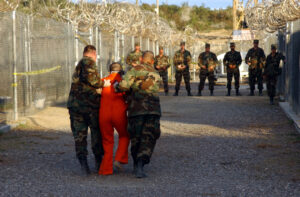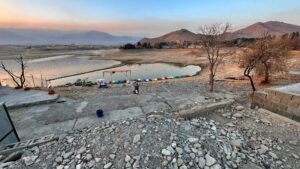Women in Afghanistan
With the resurgence of the Taliban, women in Afghanistan are once again rated by the United Nations as being "among the worst-off in the world." Learn more about their plight in the companion piece to Christian Parenti's larger article, "Afghan Autopsy."
Editor’s note: With the resurgence of the Taliban, women in Afghanistan are once again rated by the United Nations as being “among the worst-off in the world.” Learn more about their plight in the companion piece to Christian Parenti’s larger article “Afghan Autopsy.”
Under the Taliban, women in Afghanistan were severely oppressed. The idea of their liberation was used to sell the Afghan war as a war of liberation. But the condition of women in the new Afghanistan is precarious at best. While the Taliban’s members were oppressive moralists who forbade kite flying and listening to music and, at times, the education of women, they did at least impose a type of simple law and order. The new regime, in contrast, is marked by general insecurity in which women are the most vulnerable group.
In Kabul many professional women no longer wear the burka, but many still do. In the countryside a severe version of purdah — the Muslim principle of secluding and protecting women — is so strictly enforced that many men never touch or see a woman other than their mothers or pre-pubescent sisters and cousins until well into their late 20s.
For most women the only thing that has changed since the fall of the Taliban is that there has been an increase in insecurity. It is common to read or hear reports of women being abducted by gunmen who rape and sell them. There is no functioning law and order in Afghanistan — NATO forces are too thinly spread and the local police are little more than uniformed criminals — thus women have almost no protection other than that provided by armed fathers, brothers and husbands.
One feature of post-Taliban life has been a rise in prostitution. The Revolutionary Association of the Women of Afghanistan claims that as many as 25,000 Afghan women worked as prostitutes just after the fall of the Taliban. Many, many thousands still do today.
Instead of dealing with the problem of sex trafficking and abuse of women, the Karzai government launched a highly symbolic crackdown on Chinese-run brothels in Kabul. In March 2006 the government raided 11 brothels and deported 47 Chinese women. The raids made for great political theater but did not really address women’s need for economic support and protection from predators.
In the countryside, poverty has been linked to a small but notable increase in the sale of child brides. Marrying off girls as young as 11 to men in their 30s and even older has been common in Afghanistan for centuries. But now with drought and war leaving family economies in ruin, daughters seem to be sold off with greater frequency. The Taliban insurgency has burned down hundreds of schools where girls were educated. And recently Safia Ahmed-jan, the provincial director of Afghanistan’s Ministry of Women’s Affairs in Kandahar, was gunned down by Taliban fighters.
True, women hold 27 percent of the seats in the National Assembly and one-sixth of the seats in the Upper House. But most Afghan women remain illiterate, impoverished and vulnerable to political and criminal violence. Only 15 percent of Afghan woman can read. The United Nations has described Afghan women as being “among the worst-off in the world.” On average, women in Afghanistan die at least 20 years younger than women elsewhere.
Most rural Afghan women have no access to healthcare during pregnancy. One U.N. report noted: “Afghanistan’s Maternal Mortality Ratio (MMR) is estimated at 1,600 to 1,900 maternal deaths per 100,000 live births, which is one of the highest in the world.” All basic poverty measures put Afghanistan near the bottom of the U.N.’s Human Development Index, and women are still at the bottom of Afghan society.
Your support matters…Independent journalism is under threat and overshadowed by heavily funded mainstream media.
You can help level the playing field. Become a member.
Your tax-deductible contribution keeps us digging beneath the headlines to give you thought-provoking, investigative reporting and analysis that unearths what's really happening- without compromise.
Give today to support our courageous, independent journalists.
 Watch this 15-minute 1999 documentary about the lives of women under the Taliban in Afghanistan. With the Taliban back in power and women forced back into virtual house arrest, this film is tragically still relevant.
Watch this 15-minute 1999 documentary about the lives of women under the Taliban in Afghanistan. With the Taliban back in power and women forced back into virtual house arrest, this film is tragically still relevant.





You need to be a supporter to comment.
There are currently no responses to this article.
Be the first to respond.